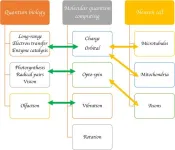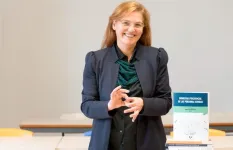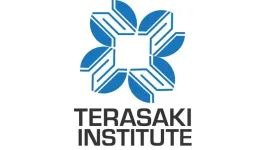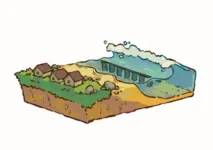(Press-News.org) Diving deep into quantum biology or cognitive science alone is challenging enough. That being said, a research team recently wrote a review article highlighting molecular quantum computing, a newly emerged research area that is likely to push the research boundaries of both. The review was published Feb. 21 in Intelligent Computing, a Science Partner Journal.
Future theoretical breakthroughs may be achieved by connecting molecular quantum computing, the bridge research area, with cognitive science and quantum biology, the authors argue.
Cognitive science centers on exploring the learning mechanism, including whether neurons learn at the classical or quantum level. Quantum biology, on the other hand, seeks to address the biological questions that cannot be answered by classical mechanics alone. These puzzles may be solved through molecular quantum computing, which uses the special functions of molecules to process quantum information.
The review first covers the progress in molecular quantum computing, quantum biology and cognitive science in general, then explains some basic terms in quantum physics before narrowing down to several key concepts to connect the dots.
One of the key concepts is quantum degrees of freedom, the bedrock of understanding and simulating quantum effects in biological systems. To simplify, quantum degrees of freedom generally describe how much "freedom" a qubit — the quantum equivalent of a classical bit — is allowed in storing and processing information in a given space.
Specifically, quantum degrees of freedom include orbitals, charges, spins, vibrations, rotations, photonic states, etc., and researchers could create different combinations of these to give different features to a quantum computing system.
In molecular quantum computing, the manipulation of molecular degrees of freedom, such as charge movement and spin states, is crucial for creating and maintaining quantum coherence. This coherence is a high-maintenance feature essential for the high performance of a quantum computing system, enabling electrons to function as qubits and transfer information across quantum circuits.
In quantum biology and cognitive science, degrees of freedom are also important. A single protein in a neuron is complicated enough to allow multiple degrees of freedom to create the quantum effect, which has already been observed in some biological processes like enzyme catalysis and photosynthesis, and which may account for consciousness.
The quantum properties in enzyme catalysis are related to charge and orbital degrees of freedom, which could be used in performing molecular quantum computing, and are presumed to be associated with microtubules and mitochondria — two key components inside a neuron cell.
In photosynthesis, the quantum effect largely involves opto-spins, an interplay between photon and spin. Opto-spins could provide insights into molecular quantum computing, where qubit performance could be enhanced by applying light to magnetic spins, and into cognitive science, where axons, another key component of neurons, might use bio-photons and spins to process information.
While many of the suggested connections remain unconfirmed or understudied, the research team hopes that further exploration could lead to "an extremely exciting science" appearing at the intersection of molecular quantum computing, quantum biology and cognitive science.
END
New research area promotes both quantum computing and cognitive science
A review on molecular quantum computing as a bridge between them
2024-03-26
ELSE PRESS RELEASES FROM THIS DATE:
Among deaf people, women have higher levels of personal growth
2024-03-26
One of the features of the deaf community is that it is highly diverse. As well as including people of different ages and genders, the members of the community do not all share the same type of deafness or form of communication. Firstly, the time of onset of deafness and the degree of hearing loss vary greatly. And secondly, not everybody uses sign and oral language in the same way. All these aspects have a bearing on the well-being of deaf people. However, few studies specifically analyse the effect of each one.
The PhD thesis, defended by Amaia Jauregi-Orbe at the Faculty ...
Severe hurricanes boost influx of juveniles and gene flow in a coral reef sponge
2024-03-26
Named for its ropy-looking long branches, Aplysina cauliformis, a coral reef sponge, provides a critical 3D habitat for marine organisms and helps to stabilize the foundation of coral reefs. However, these upright branching sponges are highly susceptible to breaking during storms, which increases sponge fragmentation and contributes to population clonality and inbreeding.
Many sponges can survive severe damage and undergo frequent fragmentation, which is considered a mechanism for asexual reproduction. While fragmentation is a commonly utilized reproductive strategy in rope sponges, they also can reproduce sexually by producing larvae. How and whether they recolonize following ...
Terasaki Institute for Biomedical Innovation catalyzes healthcare revolution with launch of four cutting-edge startups
2024-03-26
LOS ANGELES – (3/26/24) - In a landmark move for biomedical progress, the Terasaki Institute for Biomedical Innovation (TIBI) today unveiled the launch of four pioneering startup companies. These ventures represent a strategic leap forward in TIBI's commitment to transforming healthcare through innovation. By harnessing the institute's groundbreaking research in biomaterials, micro-needles, organoids, tissue engineering, and advanced biosensing, these startups are poised to tackle some of the most pressing health challenges ...
Faux reefs for coastal protection
2024-03-26
Engineers have designed a modular artificial reef that can dissipate wave energy far better than natural coral reefs, according to a study. Sixty percent of the world’s coral reefs are under threat from rising ocean temperatures, overfishing, or coastal development. At the same time, climate change is leading to sea level rise, frequent high-tide flooding, and powerful storm surges. Artificial reefs can help protect coastal infrastructure from storms as well as provide habitat for marine organisms. Michael Triantafyllou and colleagues proposed and tested an architected cellular reef structure ...
Mount Sinai study calls for major changes in the way people with comorbidities are selected by physicians for lung cancer screening
2024-03-26
A Medicare policy requiring primary care providers (PCPs) to share in the decision-making with patients on whether to proceed with lung cancer screening is fraught with confusion and lack of evidence-based information, and may actually be undermining the purpose for which it was created, Mount Sinai researchers say.
In their study, published in Annals of Family Medicine, the team reported that the policy, enacted nearly 10 years ago to encourage the use of lung cancer screening, is in urgent need of new ...
Smart maneuver: Epstein-Barr virus hijacks host genome boosting nasopharyngeal carcinoma
2024-03-26
Nasopharyngeal carcinoma (or NPC) is a rare type of cancer affecting the epithelial tissue of the nasopharynx, the upper part of the throat behind the nasal cavity. Among the three main subtypes of NPC, non-keratinizing undifferentiated squamous carcinoma is endemic to the regions of Southern China and Southeast Asia, with a strong association with Epstein-Barr virus (or EBV) infection. EBV, also known as human tumor virus, is a double-stranded DNA virus that is associated with various cancers, such as Burkitt lymphoma, T-cell lymphoma, and gastric cancer. EBV genomes mostly survive autonomously as episomes or extrachromosomal ...
New method to measure entropy production on the nanoscale
2024-03-26
Entropy, the amount of molecular disorder, is produced in several systems but cannot be measured directly. An equation developed by researchers at Chalmers University of Technology and Heinrich Heine University Düsseldorf, now sheds new light on how entropy is produced on a very short time scale in laser excited materials.
“New computational models give us new research opportunities. Extending thermodynamics for ultrashort excitations will provide novel insights into how materials function on the nanoscale,” says Matthias Geilhufe, Assistant Professor ...
Scientists on the hunt for evidence of quantum gravity’s existence at the South Pole
2024-03-26
Scientists on the hunt for evidence of quantum gravity’s existence at the South Pole
University of Copenhagen team contributes to an Antarctic large-scale experiment striving to find out if gravity also exists at the quantum level. An extraordinary particle able to travel undisturbed through space seems to hold the answer.
Several thousand sensors distributed over a square kilometer near the South Pole are tasked with answering one of the large outstanding questions in physics: does quantum gravity exist? ...
New roadmap to prevent pandemics centers on protecting biodiversity
2024-03-26
ITHACA, N.Y. – An international team of 25 scientists has proposed a roadmap for how to prevent the next pandemic by conserving natural areas and promoting biodiversity, thereby providing animals with enough food, safe havens and distance to limit contact and the transfer of pathogens to humans.
Pandemics begin when disease-harboring animals, such as bats, come in close proximity with people, livestock or other animals and pass on new pathogens. Viruses such as SARS-CoV-2, SARS-CoV-1, Nipah, Hendra and possibly Ebola have all fatally spilled over from bats to humans, ...
New maps help decision-makers factor albedo into tree-planting decisions
2024-03-26
Arlington, VA – As efforts to restore tree cover accelerate to help avoid runaway climate change, a new study highlights how restoring tree cover can, in some locations, heat up the Earth rather than cool it by affecting how much sunlight the surface reflects (i.e. “the albedo").
This new study by researchers at Clark University in the United States alongside scientists from The Nature Conservancy (TNC) and ETH-Zurich, published today in the journal Nature Communications, provides a global analysis of where restoration of tree cover is most effective at cooling the global climate system, considering ...
LAST 30 PRESS RELEASES:
New software sheds light on cancer’s hidden genetic networks
UT Health San Antonio awarded $3 million in CPRIT grants to bolster cancer research and prevention efforts in South Texas
Third symposium spotlights global challenge of new contaminants in China’s fight against pollution
From straw to soil harmony: International team reveals how biochar supercharges carbon-smart farming
Myeloma: How AI is redrawing the map of cancer care
Manhattan E. Charurat, Ph.D., MHS invested as the Homer and Martha Gudelsky Distinguished Professor in Medicine at the University of Maryland School of Medicine
Insilico Medicine’s Pharma.AI Q4 Winter Launch Recap: Revolutionizing drug discovery with cutting-edge AI innovations, accelerating the path to pharmaceutical superintelligence
Nanoplastics have diet-dependent impacts on digestive system health
Brain neuron death occurs throughout life and increases with age, a natural human protein drug may halt neuron death in Alzheimer’s disease
SPIE and CLP announce the recipients of the 2025 Advanced Photonics Young Innovator Award
Lessons from the Caldor Fire’s Christmas Valley ‘Miracle’
Ant societies rose by trading individual protection for collective power
Research reveals how ancient viral DNA shapes early embryonic development
A molecular gatekeeper that controls protein synthesis
New ‘cloaking device’ concept to shield sensitive tech from magnetic fields
Researchers show impact of mountain building and climate change on alpine biodiversity
Study models the transition from Neanderthals to modern humans in Europe
University of Phoenix College of Doctoral Studies releases white paper on AI-driven skilling to reduce burnout and restore worker autonomy
AIs fail at the game of visual “telephone”
The levers for a sustainable food system
Potential changes in US homelessness by ending federal support for housing first programs
Vulnerability of large language models to prompt injection when providing medical advice
Researchers develop new system for high-energy-density, long-life, multi-electron transfer bromine-based flow batteries
Ending federal support for housing first programs could increase U.S. homelessness by 5% in one year, new JAMA study finds
New research uncovers molecular ‘safety switch’ shielding cancers from immune attack
Bacteria resisting viral infection can still sink carbon to ocean floor
Younger biological age may increase depression risk in older women during COVID-19
Bharat Innovates 2026 National Basecamp Showcases India’s Most Promising Deep-Tech Ventures
Here’s what determines whether your income level rises or falls
SCIE indexation achievement: Celebrate with Space: Science & Technology
[Press-News.org] New research area promotes both quantum computing and cognitive scienceA review on molecular quantum computing as a bridge between them







